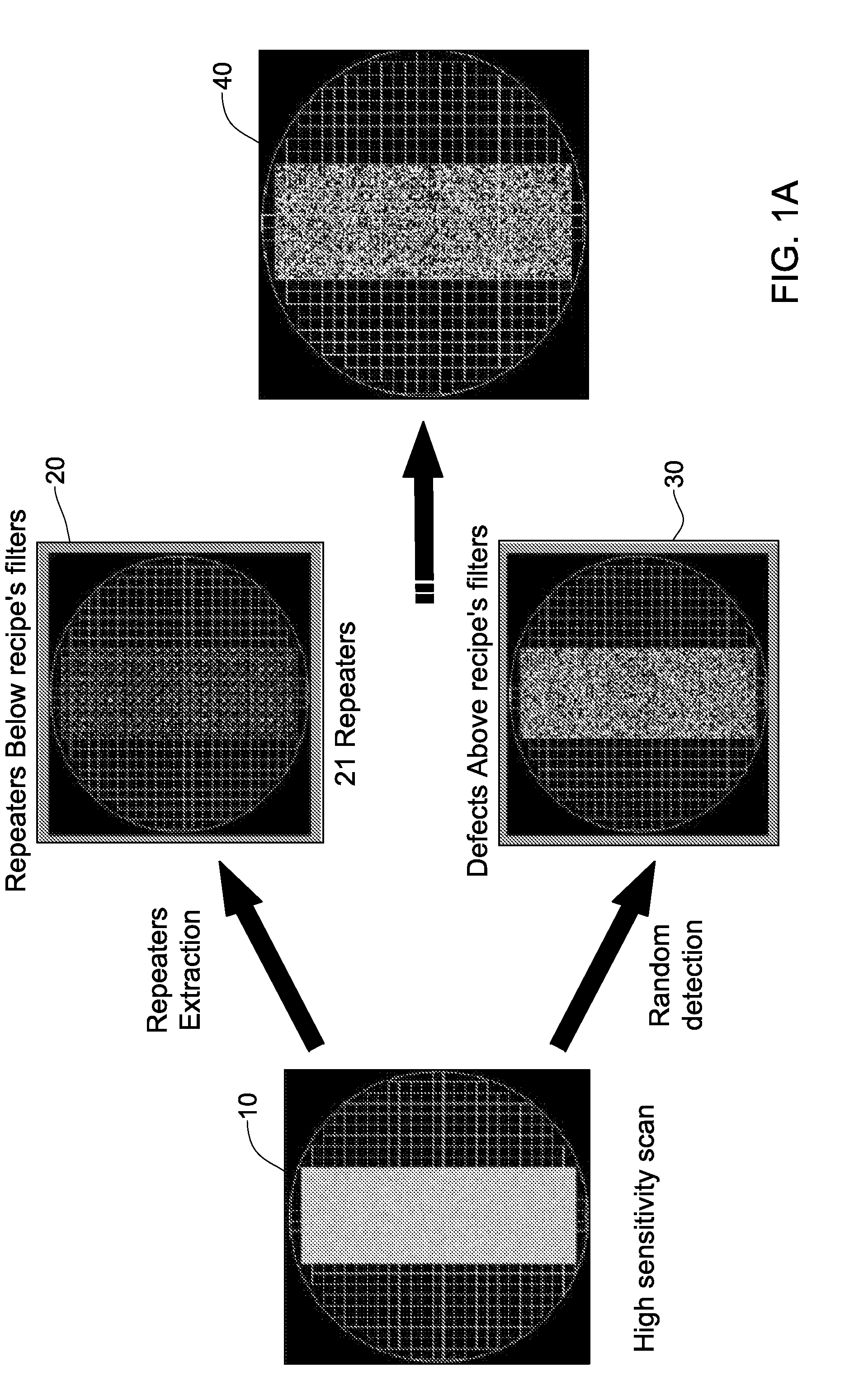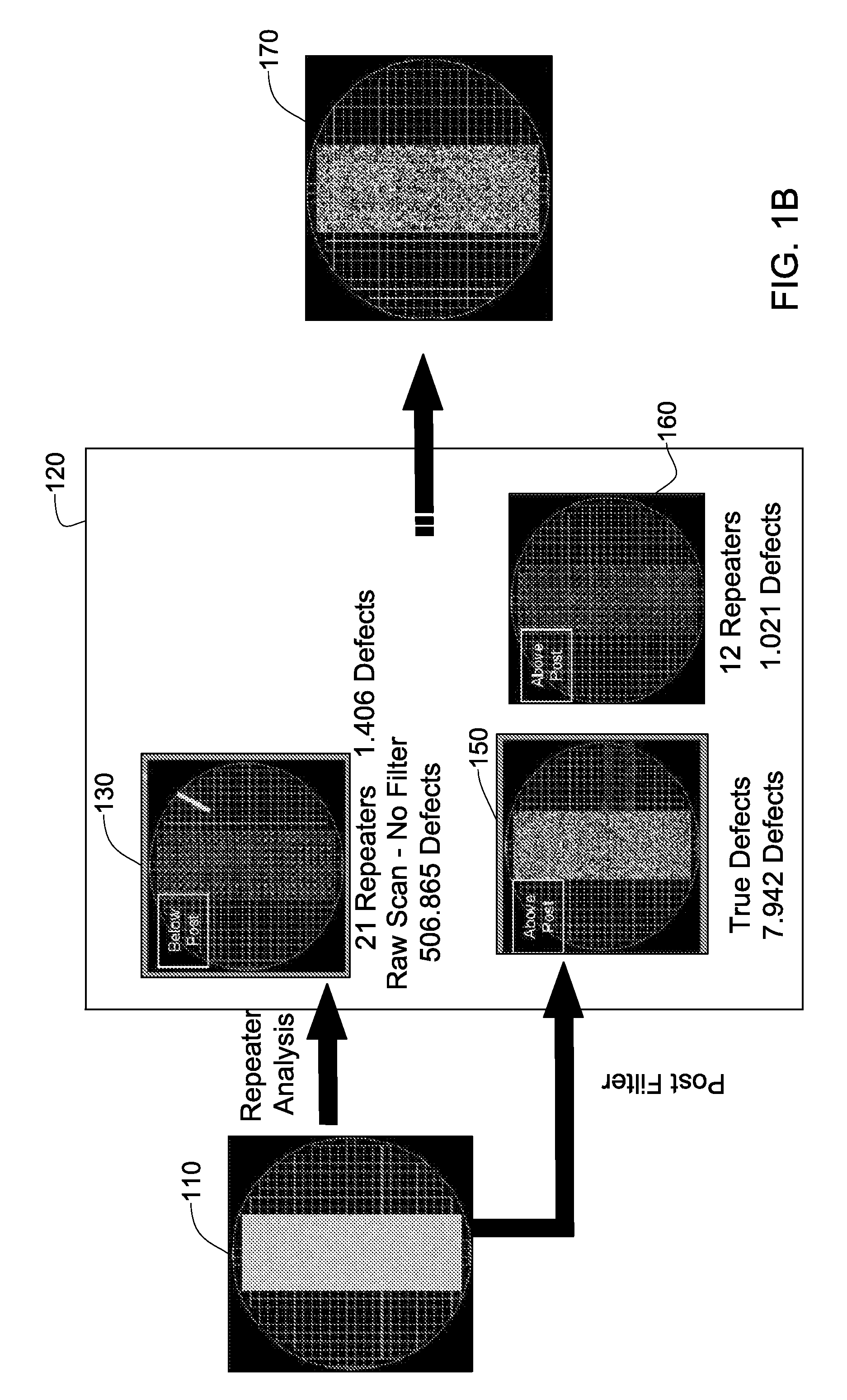Wafer defect detection system and method
a defect detection and defect technology, applied in the field of wafer defect detection systems, can solve problems such as mask problems that are often associated with repeaters
- Summary
- Abstract
- Description
- Claims
- Application Information
AI Technical Summary
Benefits of technology
Problems solved by technology
Method used
Image
Examples
Embodiment Construction
[0058]The following acronyms are used herein:[0059]A. IOD—image on demand[0060]B. OTF—on the fly images[0061]C. C2C—Cell 2 Cell detection, for which a purifier as described herein may be employed, even in fields including 2 dies in the direction of D2D detection.[0062]D. V / G, V-G: Volume grade filter, or a functionality which filters out defects based on the volume and / or grade thereof.[0063]E. BB—bounding box[0064]F. AR—aspect ratio[0065]G. IP—image processor[0066]H. CR—capture rate[0067]I. RBP—repeater below post[0068]J. NF—nuisance filter[0069]K. ADI (gate ADI layer)—“after-develop inspect”, namely a layer in semiconductor processing)[0070]L. STI—short trench isolation[0071]M. TPT—throughput[0072]N. SR—search radius for repeater analysis. Two defects that are within this distance in field coordinates of each other may be either deemed to belong to the same repeater family or to comprise a pair of non-repeaters.[0073]O. IP—image processor.
[0074]The following terms may be construed...
PUM
 Login to View More
Login to View More Abstract
Description
Claims
Application Information
 Login to View More
Login to View More - R&D
- Intellectual Property
- Life Sciences
- Materials
- Tech Scout
- Unparalleled Data Quality
- Higher Quality Content
- 60% Fewer Hallucinations
Browse by: Latest US Patents, China's latest patents, Technical Efficacy Thesaurus, Application Domain, Technology Topic, Popular Technical Reports.
© 2025 PatSnap. All rights reserved.Legal|Privacy policy|Modern Slavery Act Transparency Statement|Sitemap|About US| Contact US: help@patsnap.com



